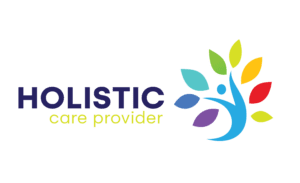Creating Inclusive Environments: Tips for Service Providers
In a diverse society like Australia’s, creating inclusive environments is not just a nicety—it’s a necessity. For service providers, this goes beyond merely abiding by legal requirements; it involves fostering a space where all individuals, regardless of their physical or cognitive abilities, can comfortably access services. This article brings you insights from a Brisbane-based holistic care provider on how to create genuinely inclusive environments.
Understanding the Importance of Inclusion
Before diving into the tips, it’s crucial to understand why inclusivity matters. An inclusive environment doesn’t just meet the needs of a diverse population; it also enriches the community by allowing everyone to contribute and participate freely.
Physical Accessibility
The term ‘accessibility’ often brings to mind wheelchair ramps and disabled parking spaces. While these are indeed essential, there’s more to physical accessibility.
Tips:
- Universal Design: Use a universal design approach when setting up your premises. This concept focuses on designing spaces that are usable by the widest range of people.
- Signage: Make sure signs are clear, with large, easy-to-read fonts and braille where possible.
- Accessible Facilities: Consider aspects such as lowered counters for wheelchair users and tactile indicators for visually impaired individuals.
Digital Inclusivity
In today’s digital age, services are increasingly being offered online. However, many websites and apps are not designed with accessibility in mind.
Tips:
- Web Content Accessibility Guidelines (WCAG): Adhere to these international standards to make your digital platforms accessible.
- Alt Text for Images: This allows screen readers to describe images to visually impaired users, making your content more accessible.
- Keyboard Navigation: Ensure that all functionalities can be accessed using a keyboard for those who can’t use a mouse.
Sensory-Sensitive Spaces
Some individuals may have sensory sensitivities, such as being easily overwhelmed by loud noises or bright lights.
Tips:
- Quiet Zones: Offer a quiet area where people can go to decompress.
- Lighting: Avoid overly bright or flickering lights, which can be distressing for some individuals.
Staff Training
Your staff are the face of your service, and their interactions play a significant role in how inclusive your environment feels.
Tips:
- Disability Awareness Training: Ensure that your staff understand various disabilities and know how to interact respectfully with all individuals.
- Cultural Competency: Train staff on the importance of cultural awareness and sensitivity.
Mental Health and Holistic Well-Being
As a holistic care provider in Brisbane, we advocate for looking at the whole person, including mental well-being.
Tips:
- Mental Health First Aid: Train staff in basic mental health first aid.
- Flexible Service Options: Offer multiple ways to access your services to cater to different comfort levels and needs. Creating an inclusive environment is a continuous effort that demands more than just ticking off a checklist.It’s about adopting a mindset that values diversity and strives to meet the needs of all your clients. By implementing these tips into your service strategy, you’ll be well on your way to offering truly inclusive and holistic care in Brisbane, enhancing the lives of all individuals in your community.




Leave a Reply
Want to join the discussion?Feel free to contribute!